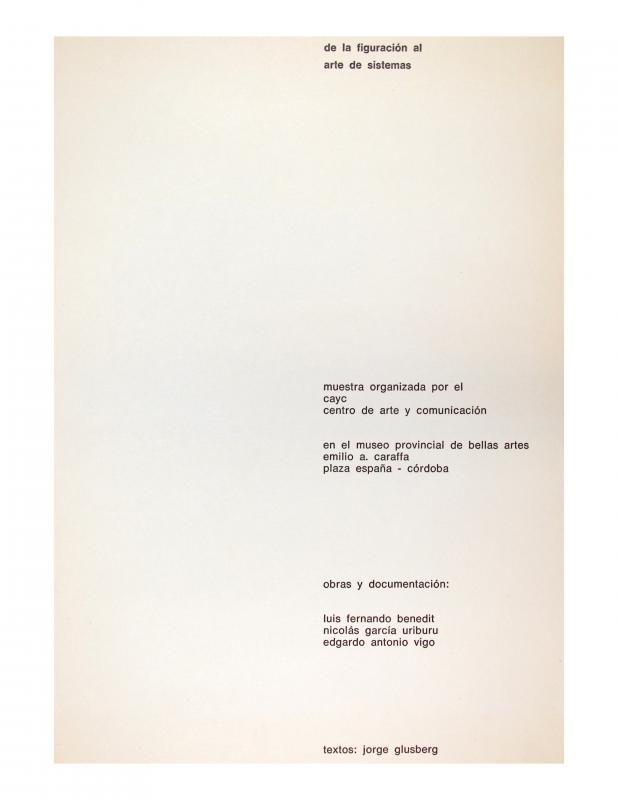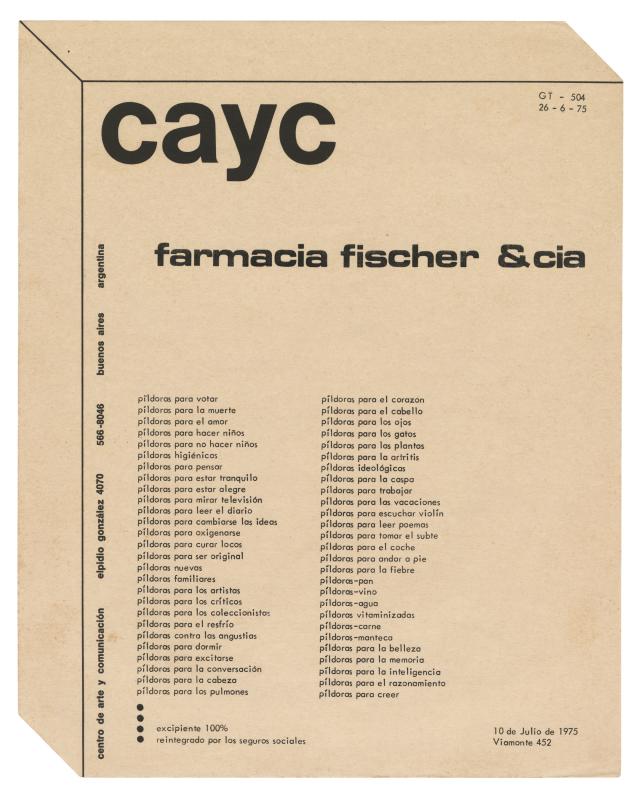Ever since it was founded, the CAYC (Centro de Arte y Comunicación), helmed by the cultural promoter, artist, and businessman Jorge Glusberg, was intended as an interdisciplinary space where an experimental art movement could flourish. The establishment of collaborative networks connecting local and international artists and critics played a key role in this process. The exhibitions shone a light on these exchanges, in which overviews of trends or individual artists introduced the innovations of international contemporary art and made Argentine and Latin American artists better known on the global scene.
To launch his project, Glusberg relaxed the rules defining the “arte de sistemas” category; initially to include practices associated with the Conceptual art movement that was, at that time, in full swing on an international level. During the exhibition De la Figuración al Arte de Sistemas (1970) [see doc. no. 761141] the Argentinean critic came up with the idea for a kind of art that “is about processes rather than the finished products of good art.”
At Arte de Sistemas, which opened in July 1971 at MAM (now Moderno) in Buenos Aires, Glusberg issued a broad invitation to local and international artists. He also organized exhibitions and activities at the CAYC that included a few guests. This was a normal practice at the center, taking full advantage of the presence of foreign artists to share and expand artistic awareness in the local scene, encouraging Argentinean artists to experiment with the latest trends.
The exhibition Joseph Kosuth. El arte como idea opened with a talk by the artist in which he discussed his artistic-linguistic explorations, known as a “system.” His proposal, which was based on the philosophy of language, was published in the bilingual catalogue, with an introduction by Glusberg and an artist’s statement in which Kosuth refers to his works as “investigation.” He uses street advertising and communications media to create a work in progress whose underlying idea is of more consequence than materiality itself.
In Buenos Aires, in the mid-1960s, artists such as Alberto Greco, Edgardo Giménez, and Marta Minujín, among others, used mass communications media just as a brand new artistic matter. The critic Oscar Masotta was the leader of those theoretical activities that, in 1966, led to the publication of the manifesto “Arte de los Medios” (Art of the Media), a pioneering initiative headed by Eduardo Costa, Raúl Escari and Roberto Jacoby. For more on sociological art, consult the following gacetillas: GT-504 (doc. no. 1476845), GT-507 (doc. no. 1476846), GT-508 (doc. no. 1476847) y GT-528 (doc. no. 1476850).


